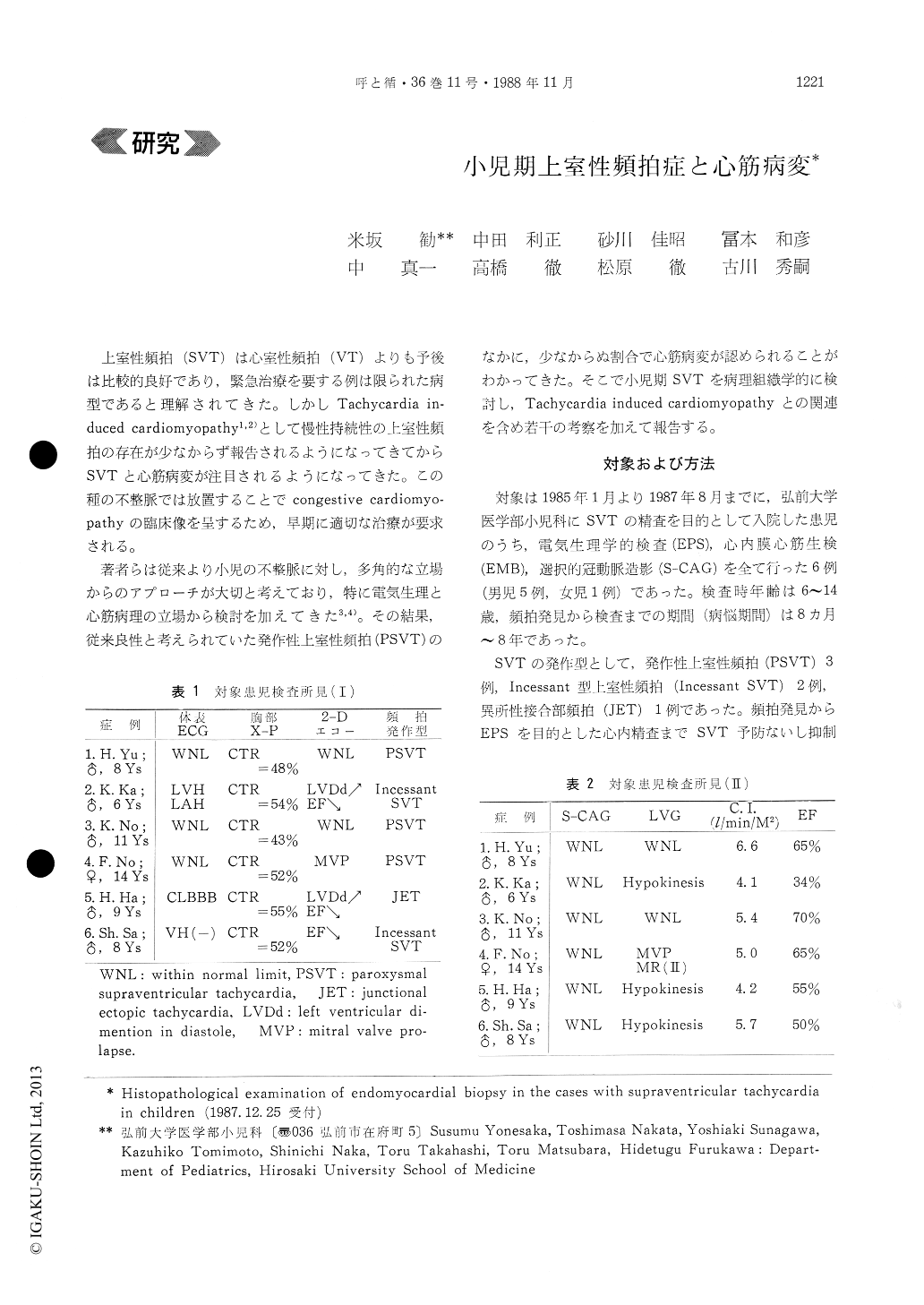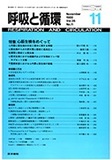Japanese
English
- 有料閲覧
- Abstract 文献概要
- 1ページ目 Look Inside
上室性頻拍(SVT)は心室性頻拍(VT)よりも予後は比較的良好であり,緊急治療を要する例は限られた病型であると理解されてきた。しかしTachycardia in-duced cardiomyopathy1,2)として慢性持続性の上室性頻拍の存在が少なからず報告されるようになってきてからSVTと心筋病変が注目されるようになってきた。この種の不整脈では放置することでcongestive cardiomyo-pathyの臨床像を呈するため,早期に適切な治療が要求される。
著者らは従来より小児の不整脈に対し,多角的な立場からのアプローチが大切と考えており,特に電気生理と心筋病理の立場から検討を加えてきた3,4)。その結果,従来良性と考えられていた発作性上室性頻拍(PSVT)のなかに,少なからぬ割合で心筋病変が認められることがわかってきた。そこで小児期SVTを病理組織学的に検討し,Tachycardia induced cardiomyopathyとの関連を含め若干の考察を加えて報告する。
Six children, aged six years to fourteen years, with supraventricular tachycardia for eight months to eight years in the absence of any other apparent underlying heart disease underwent cardiac evalua-tion with special reference to electrophysiology and histopathology using endomyocardial biopsy.
Following electrophysiological study four of six patients with supraventricular tachycardia were re-cognized to have atrioventricular nodal reentrant tachycardia, one junctional ectopic tachycardia and two incessant supraventricular tachycardia.
Right ventricular endomyocardial biopsy specimen were abnormal in five of six patients. These findings included myocellular hypertrophy, degeneration of myocytes, disarray of myocytes, thickness of endo-cardium and interstitial fibrosis. Abnormalities of endomyocardial biopsy specimen were much more advanced in the patients with incessant supraven-tricular tachycardia than in the patients with pa-roxysmal supraventricular tachycardia.
In the patients with paroxysmal supraventricular tachycardia, advanced histopathological severity of endomyocardial biopsy specimen was associated with more frequent incidence of paroxysmal supra-ventricular tachycardia attack and longer duration of follow-up. Poor left ventricular ejection fraction was associated with severe histopathological abnormalties of endomyocardial biopsy specimens.
Although there is no overt clinical symptoms and signs in the patients with supraventricular tachy-cardia, it may be recommended to prevent recur-rence of supraventricular tachycardia attack as early as possible because of propensity for the develop-ment of possible secondary cardiomyopathy.

Copyright © 1988, Igaku-Shoin Ltd. All rights reserved.


